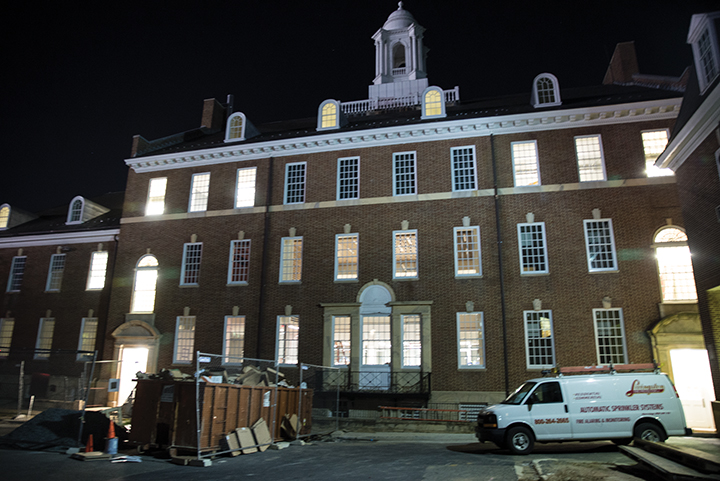The newly renovated wing of H.J. Patterson Hall has taken on a new role as an international hub on the University of Maryland’s campus.
Formerly a science lab building, H.J. Patterson now houses several international entities, such as the Office of International Affairs, the Maryland Language Science Center, the Education Abroad office, International Student and Scholar Services, the Latin American Studies Center and the Arabic and Persian flagship programs. The Maryland Language Science Center was previously located in the basement of Taliaferro Hall, Caitlin Eaves, the business manager for the Maryland Language Science Center, said. The Office of International Affairs was located in Susquehanna Hall during that time.
In H.J. Patterson, rooms for the Arabic and Persian flagship programs have culturally themed lounges, and there is an Arabic library on the same floor. The building also features a main atrium space with a cafe and lounge area, with one of the atrium’s walls decorated with maps of eight major global cities, including Rio de Janeiro, London and Tel Aviv.
[Read more: A new cafe in H.J. Patterson offers a ramen bar, sushi and specialty teas]
“Culture can’t be divorced from language or academic work, so part of what we’re seeing is that these units really integrate the culture,” Eaves said.
For Colin Phillips, the director of the Maryland Language Science Center, one benefit of its new location is the facilitated collaboration between international offices and departments.
“We work closely with the Office of International Affairs, so having them in the same hallway is incredibly useful so that we can go back and forth,” he said.
With this centralized location, Eaves said the office can host events for students — including guest speakers and global social hours for people of the international community to gather — that would be easier for students to see, compared to activities hosted on the top floor of any campus building. The Office of International Affairs has already used the space for the Greek ambassador to deliver a speech.
[Read more: After more than a year of renovations, H.J. Patterson will be UMD’s epicenter for global affairs]
“It kind of helps people get a better idea of everything they have available to them,” she said. “You have people coming to the Language Science Center and seeing on a daily basis what OIA is having in the main atrium. It gives you a better feel of what’s going on in the international community at UMD.”
Eaves noted that since the building’s units work together and many students tend to be involved with more than one office or department, having everything in the same place has helped students and faculty.
“It had an immediate effect on bringing people together in ways they weren’t before,” Phillips said.
Ross Lewin, associate vice president for international affairs, said the building’s design makes it an ideal place to host classes with students from partnering institutions around the world. These are project-based, collaborative classes, he said, that take 10 to 15 students from this university and 10 to 15 students studying at a university in another country and make them work side-by-side.
While these classes are an asset to the building, Lewin said he sees the atrium becoming a place for students to gather and watch things such as the World Cup, the Olympics or news coverage of events such as countries signing peace treaties.
“By placing all of these international offices in the heart of the campus — right on the mall,” he said, “the university is making a clear statement that international education and international research are of value to the institution.”



